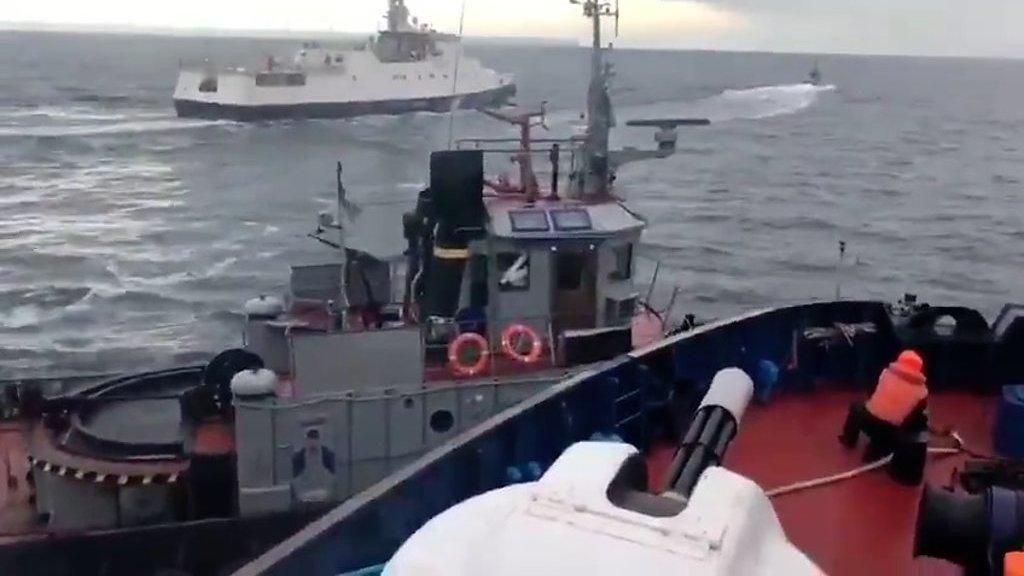Why Ukraine-Russia sea clash is fraught with risk
- Published
Jonah Fisher talks to a commander of the Ukrainian Navy about the tensions in the Azov Sea
"This won't be another Crimea," the head of Ukraine's navy told me when I spoke to him about the situation in the Sea of Azov six weeks ago.
I'd just come back from a trip to Ukraine's industrial port of Mariupol and had spent the night on board a coastguard vessel.
In spite of Commander Ihor Voronchenko's bravado, it was clear, even then, that Russia held all the cards.
Outnumbered and outgunned on the water, there was very little Ukraine's threadbare navy could do if Russia wanted to take control of the Sea of Azov.
More on Black Sea crisis
Legally Ukraine's position was also weak.
Under the terms of a 2003 agreement, the Azov sea and its access point through the Kerch Strait are supposed to be shared by Ukraine and Russia.
The 2003 deal didn't put any dotted lines on the chart. Instead, the vessels of both countries were given carte blanche to pretty much roam as they wished.
Footage of the collision was posted by the Ukrainian Interior Minister
It worked, up to a point. Then in 2014 Russia seized Crimea and the dynamic changed.
The Kerch Strait was no longer flanked by the Russian authorities to the east, and the Ukrainians in the west.
The straits were now fully under Moscow's control, and the Russians had big plans.


Moscow wanted to link Crimea to Russia, so a 12-mile (19km) bridge was quickly constructed. It was formally opened in May 2018 when Russian President Vladimir Putin triumphantly drove a truck across it.
The bridge was bad news for eastern Ukraine.
Citing the need to increase security, Russia dramatically increased the number of armed vessels both near the Kerch Strait and in the Sea of Azov.
Cargo ships that wanted to reach Ukraine's Azov ports now found themselves subject to more inspections and lengthy delays that sometimes stretched to a week.
With an extra day at sea costing a shipping company up to $15,000 (£11,700), picking up steel or grain from Mariupol was now an unpredictable proposition, and some understandably opted to stay away.
Ukraine began complaining that it was facing an economic blockade, and that Russia was in breach of the 2003 "sharing" agreement.
Much to Kiev's frustration, there was little international response, and the life was slowly throttled out of Ukraine's Azov ports.
The cranes that peer down on to Mariupol's docks stood idle and the port workers were put on a four-day week. When we visited in October, there were just three cargo ships in dock.
Left to its own devices, Ukraine has tried to bolster its limited naval capabilities.
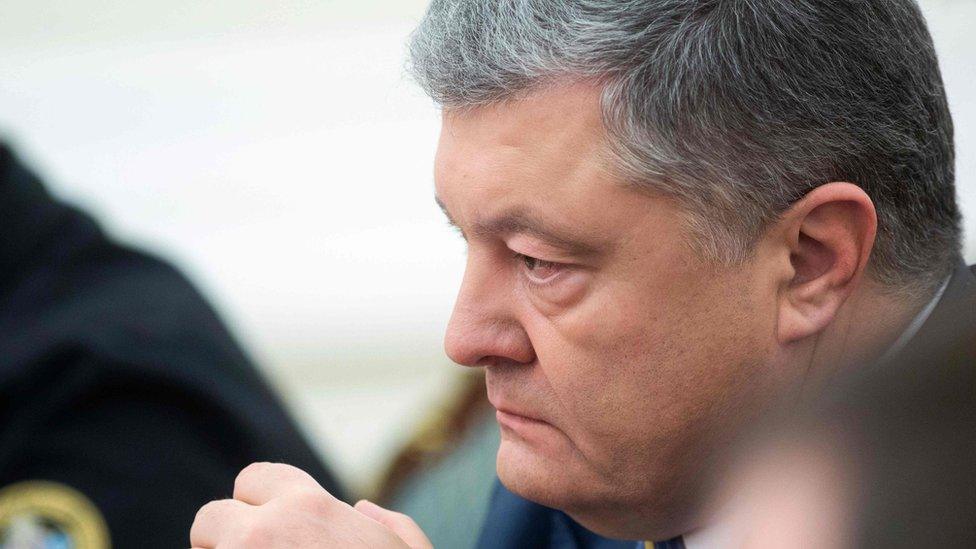
Ukraine's president said martial law would last 30 days and would not affect scheduled elections
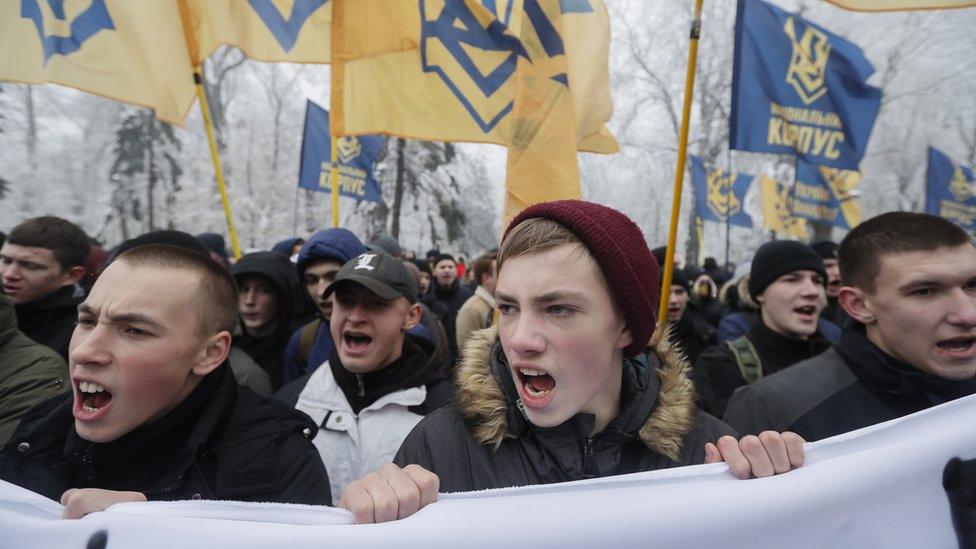
The clash prompted Ukrainian nationalists to demand action against Russia
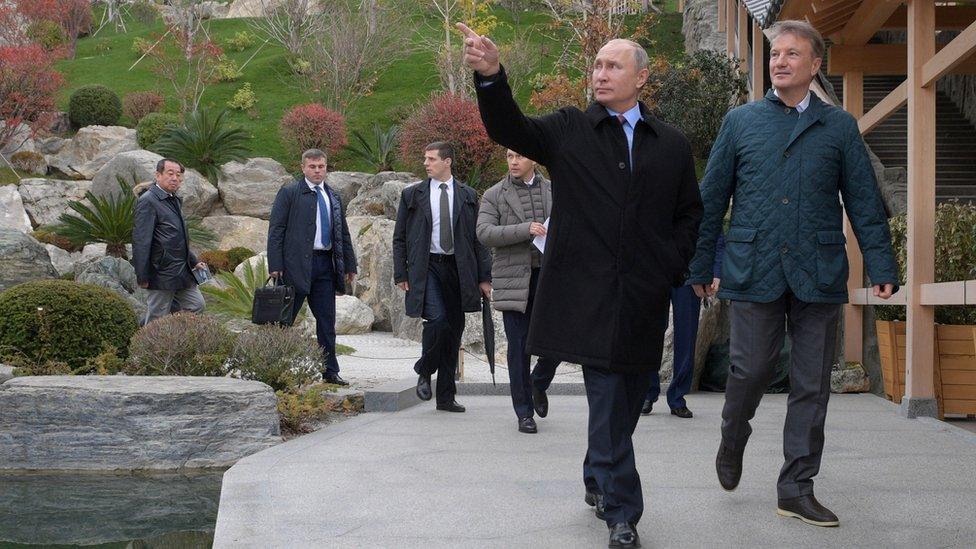
Russia's Vladimir Putin visited Crimea two days before the clash a few miles off the peninsula
The refitting of two second-hand ships has been agreed with the US, and a few vessels have been redeployed from the Black Sea into the Azov.
But they're still hopelessly outnumbered.
That brings us to Sunday, when Ukraine attempted to send three navy vessels - a tugboat and two small armoured ships through the Kerch Strait.
Those dramatic events have been well documented and - as is now the case with everything to do with Russia - endlessly debated.
Put in the simplest incontestable terms, Russian coastguard vessels rammed and then shot at the Ukrainian boats before capturing them and the 24 sailors on board.
It marked the most serious development in Ukraine's relationship with Russia since the annexation of Crimea back in 2014.
On Monday evening, 24 hours after he lost three of his boats and nearly two dozen men, Cdr Voronchenko dropped by the BBC office in Kiev for another chat.
I asked him whether he still believed, as he'd told me six weeks ago, that the Sea of Azov would not be lost to Russia like Crimea. There was no certainty this time.
"I'll tell you this - we will fight for our land till our last breath," he said.
"We'll do all we can so our land remains ours and our sea remains ours. We'll take all necessary measures to defend and protect our country."
- Published26 November 2018
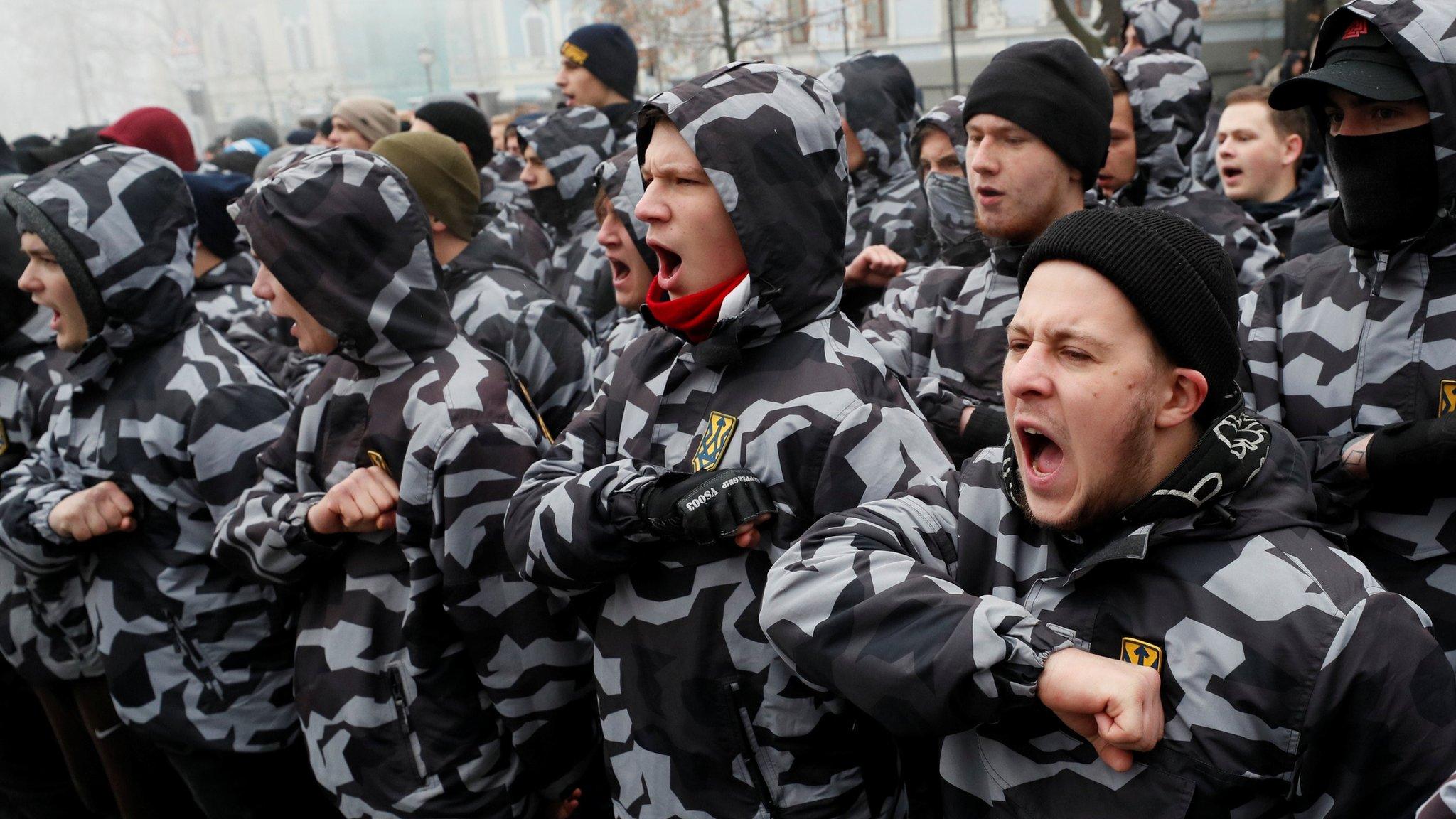
- Published26 November 2018
